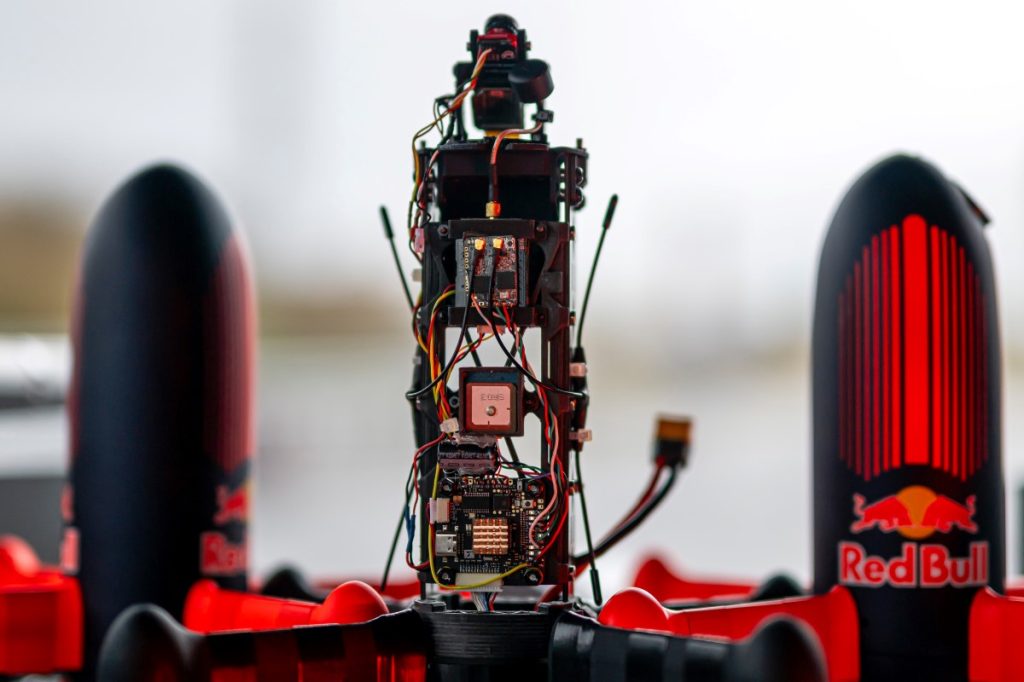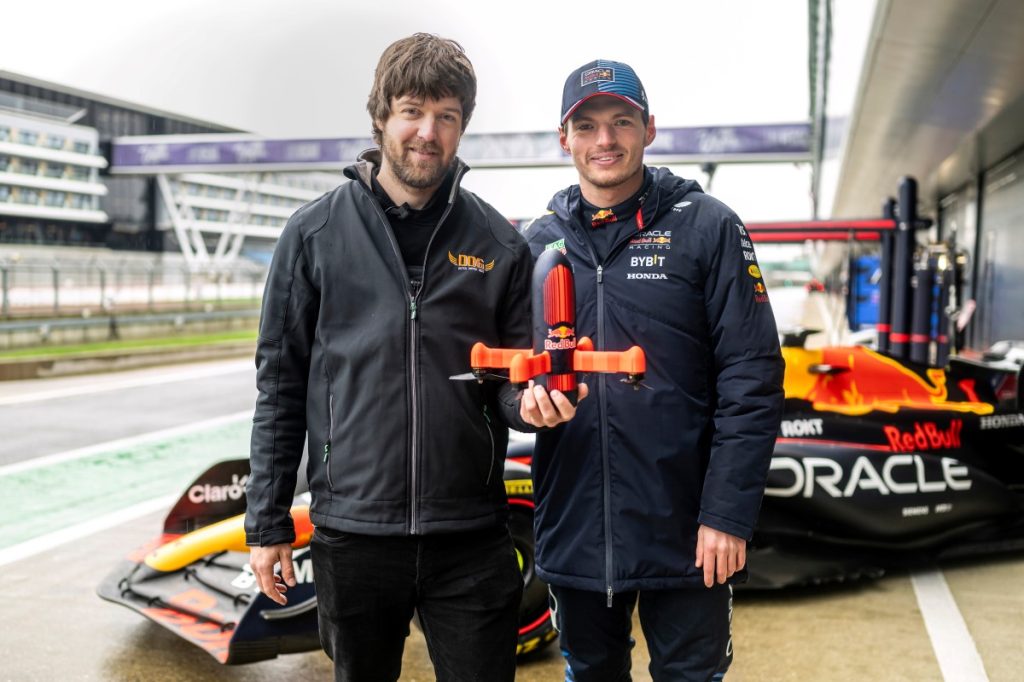
The inside story of how Red Bull took DIY engineering to the next level to build a rocket-shaped drone that could keep up with an F1 car on the track.
The average consumer drones travel around 60 km/h, with an approximate battery life of 30 minutes. But a new first-person view (FPV) drone has managed to reach speeds of 300kph+ to keep up with Max Verstappen’s Formula One car for an entire lap of 3.6 miles (5.8km).
Not only does this achievement mark a groundbreaking milestone in drone technology, but it has also etched a never-before-seen moment in the rich history of Formula 1. So, how did Red Bull make this possible? Let’s start at the beginning…
Earlier this month, Oracle Red Bull Racing unveiled their brand-new RB20 car that would lead the charge for the defending world champions in the 2024 Formula 1 season. What fans did not know at the time is that a couple of days before, the car had been successfully filmed by a drone that could accelerate two times faster, reaching 300 km/h in just 4 seconds, with a top speed of over 350 km/h.
After seeing this flying camera in action on the circuit, Verstappen commented, “I never thought I’d see a drone going that quick just for camera footage. I didn’t know it was following me… and it was very close to me in some places. I was really surprised at how quickly it could keep up, and also how close it could get in the corners. It gives a bit of a different perspective to watching Formula One.”
You can watch Verstappen being chased by the world’s fastest drone in a first-ever F1 “One Shot” here:
How the world’s fastest camera drone was built
The manually piloted FPV drone, which looks like a rocket, was custom-built for this purpose. Red Bull Media House commissioned the job to Dutch Drone Gods who roped in fast-drone legend “Quadmovr” for direction. The team worked tirelessly to solve the puzzle of finding the perfect balance in electronics, canopy designs, weight, speed, flight length, and distance.
A lot of 3D printing was involved for the outer structure. For instance, Red Bull Advanced Technologies, the engineering arm of the Oracle Red Bull Racing Formula 1 team, chipped in with lightweight aerodynamic fairings and structural motor mount arms which helped to reduce the total mass of the drone by approximately 10%.
But most of the electronics and the motors inside were pretty standard, off-the-shelf components, with some more powerful, unreleased hardware thrown into the mix.
Also read: Down $90, DJI Mini 3 is the best beginner drone of 2024

The progress was trialed through numerous tests at Formula 1 tracks, utilizing RB8 and RB19 cars driven by reserve driver Liam Lawson and 13-time Grand Prix winner turned broadcaster David Coulthard. Data points from tests helped the team to improve areas such as steering, braking, and camera angle control.
Drone pilot Ralph Hogenbirk, better known as Shaggy FPV, was simultaneously preparing for the big filming day with multiple flight simulations. Red Bull knew he was the right person for the job since he had previously piloted a variety of FPV drones following MTB bike athletes in events like Red Bull Cerro Abajo.
But keeping up with a Formula 1 car going at full speed presented a new challenge even for Shaggy FPV. He would need to master unprecedented cornering, acceleration, and deceleration while keeping an eye on the battery life as well as connectivity between the drone and the receiver. And he would have to do all this while navigating over bridges around the circuits, flying under billboards, and anticipating Verstappen’s braking points.
Shaggy FPV would control the drone’s flight route using a radio controller, observing the flight path solely through goggles that provided a low-resolution view from the drone’s vantage point. The camera angle would be adjusted simultaneously with a foot pedal. And it would require absolute precision in hand-to-eye coordination to deliver a smooth close-up shot of an F1 car going over 300 km/h.
Above all, the drone needed to fly with the agility of an F1 car. This meant big accelerations and decelerations, both of which diminished battery life by approximately 3 minutes.
So, the whole thing took almost a year to come around, but as the video above shows, the hard work has paid off!

Stressing that this was the craziest shoot he has done so far, Shaggy FPV said, “This is a special drone because this is the only one with a fitted camera and goes this fast. It’s fully custom-built, it’s one-of-a-kind that we have developed. It is a very challenging project to create a drone that’s fast enough to keep up and keep the car in full frame, whilst capturing the shot in an interesting way.”
Read more: Ohio to monitor traffic along US Route 33 with a 20-pound drone
FTC: We use income earning auto affiliate links. More.





Comments